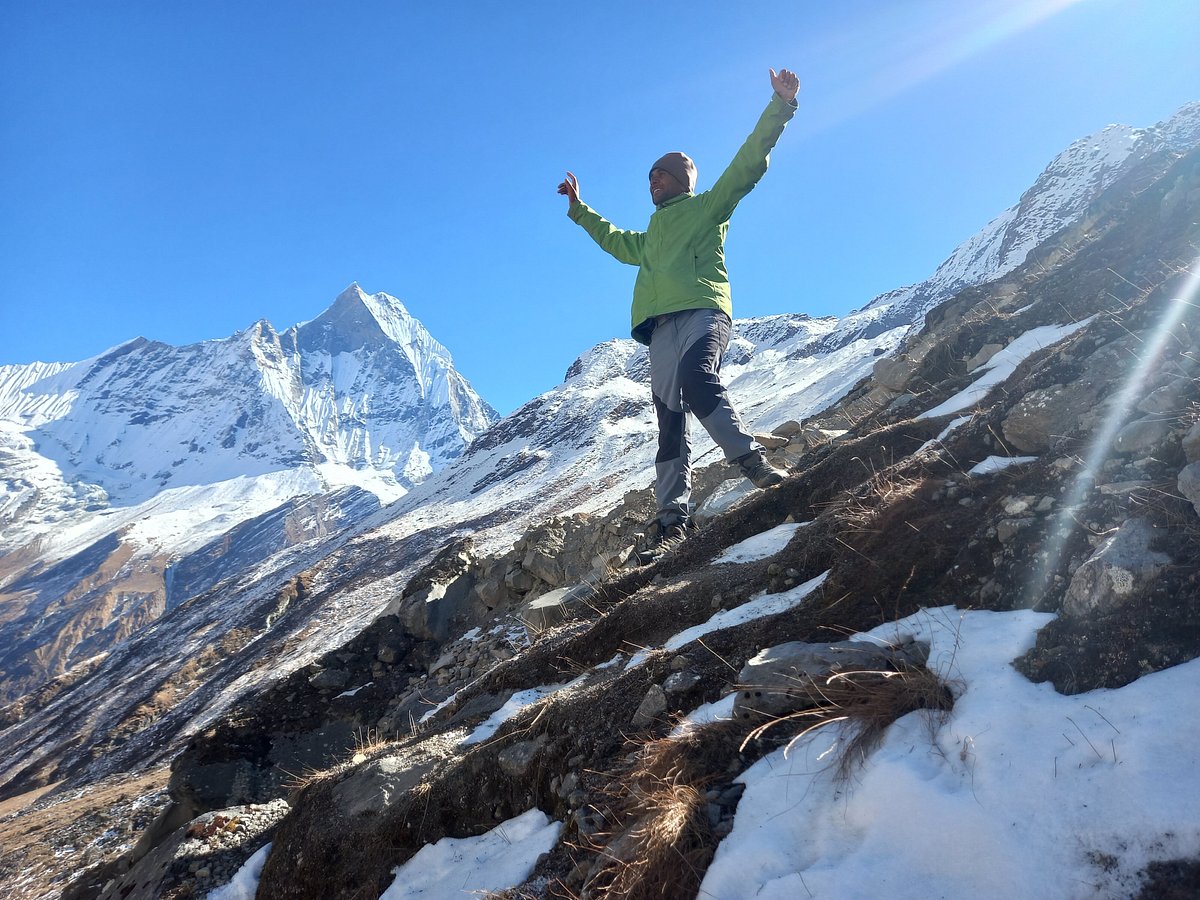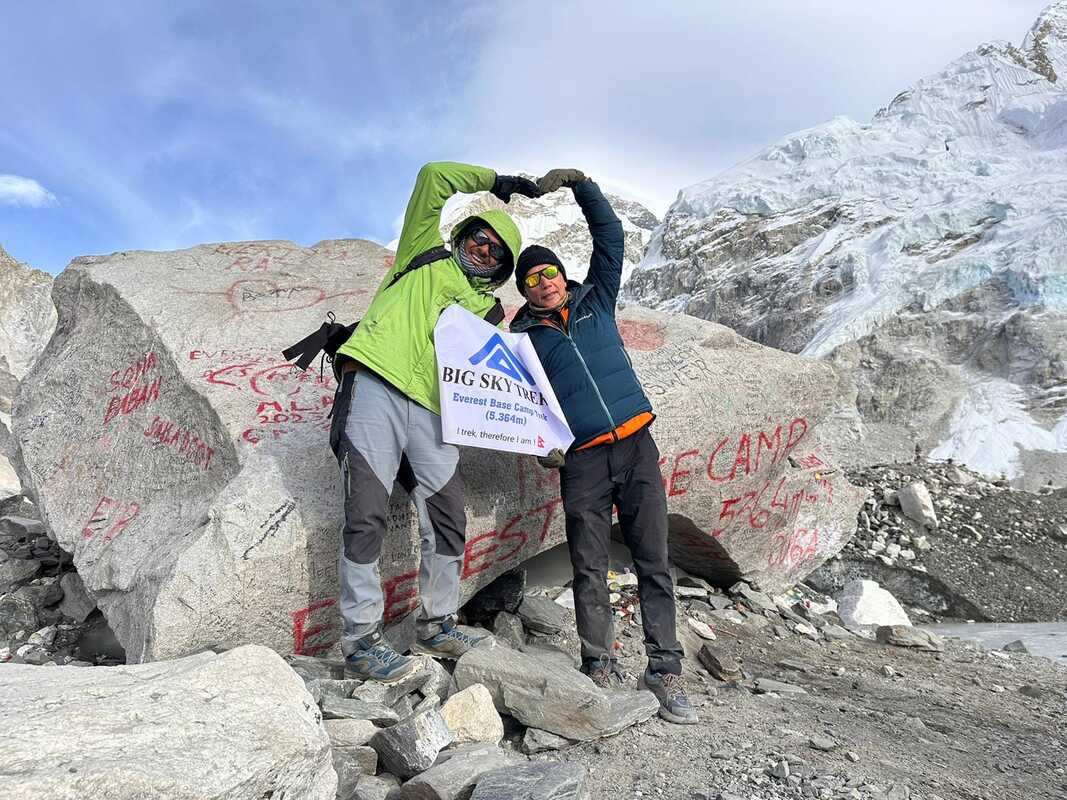The Ultimate Packing List for Trekking in Nepal
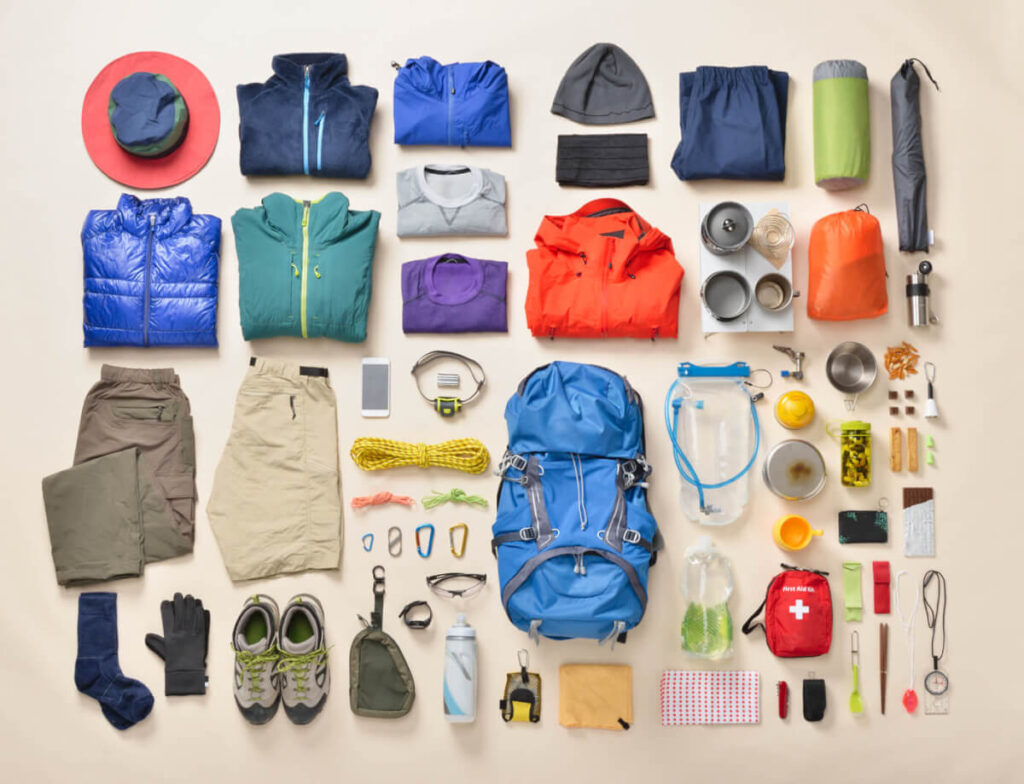
Trekking in Nepal is a dream for many adventurers, and preparation is key to making your journey memorable. Whether you’re tackling the Annapurna Circuit, Everest Base Camp, or exploring off-the-beaten trails like Manaslu or Tsum Valley, a well-prepared packing list for trekking in Nepal ensures your safety, comfort, and enjoyment.
This detailed guide will walk you through Nepal trekking essentials, the do’s and don’ts, and what to leave behind. Let’s break it down item by item.
Why the Right Packing List Matters
Trekking in Nepal brings you face-to-face with unpredictable weather, diverse terrain, and altitudes that can range from 800 meters to over 5,000 meters. Having the right gear ensures you’re warm at night, dry during unexpected downpours, and light enough to trek without strain.
With this packing list for trekking in Nepal, you’ll know exactly what’s crucial and what’s optional for every season and route.
Packing for a Trekking in Nepal
For trekking in Nepal, pack smartly. Essential Clothing Items include base layers, fleece, waterproof jacket, and trekking pants for varying weather. Footwear for the Trails means sturdy trekking boots and warm socks. Sleeping Essentials like a -10°C sleeping bag, liner, and pad ensure comfort. Gear and Accessories such as a 50–65L backpack, trekking poles, headlamp, and 2–3L water bottles aid safety. Toiletries and Health Kit with biodegradable soap, SPF 50+ sunscreen, and a first-aid kit (with Diamox) maintain hygiene. Electronics and Documents include a phone with offline maps, adapter, and cash. Snacks and Personal Comfort like energy bars and a journal boost energy and relaxation.
Essential Clothing Items
Clothing is your first layer of defense in the mountains. Think in layers—base, insulation, and outerwear.
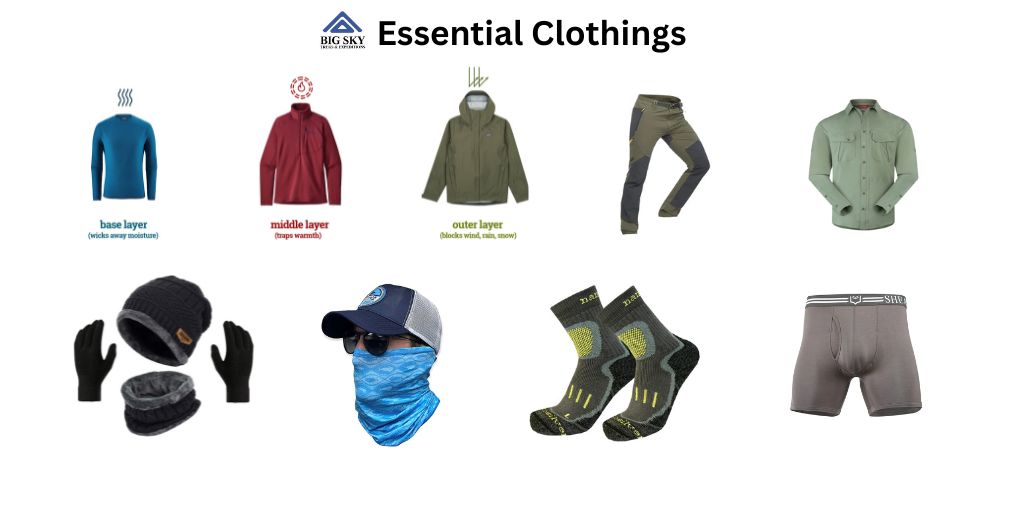
What to pack for trekking in Nepal includes:
- Base Layers: Moisture-wicking thermal tops and bottoms
- Middle Layers: Fleece jacket or down jacket
- Outer Shell: Waterproof and windproof jacket and pants
- Trekking Pants and Shirts: Quick-drying and breathable materials
- Gloves and Hat: Thermal gloves and woolen beanie
- Underwear and Socks: Multiple pairs, preferably wool or synthetic
- Buff or Neck Gaiter: Protects from dust and cold
These are non-negotiable parts of your hiking packing list Nepal.
Footwear for the Trails
Footwear can make or break your trekking experience.
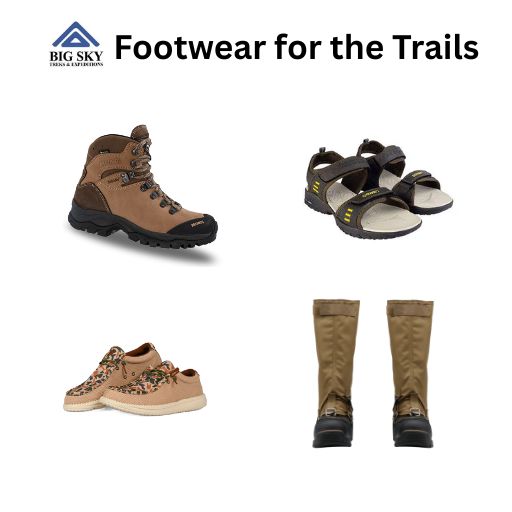
Make sure you include:
- Trekking Boots: Waterproof, well-broken in, with ankle support
- Camp Shoes or Sandals: For evenings at the teahouse
- Gaiters (optional): Useful in snow or muddy conditions
Proper boots are a must in your trekking gear for Nepal, especially if you plan on longer or high-altitude treks.
Sleeping Essentials
Although teahouses provide basic bedding, high-altitude locations can get extremely cold at night.
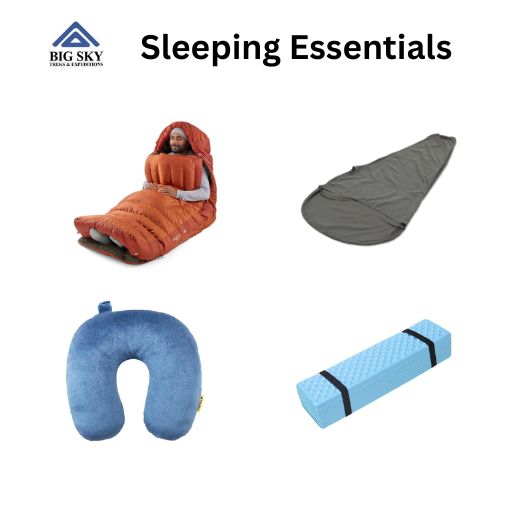
Include in your Nepal trekking essentials:
- Sleeping Bag: Rated for -10°C or lower for high-altitude treks.
- Sleeping Bag Liner: Adds extra warmth and keeps your bag clean.
- Travel Pillow (optional): Lightweight, inflatable for comfort in teahouses.
- Sleeping Pad/Mat: Provides insulation and cushioning on hard teahouse beds or camping surfaces.
Sleeping gear is especially important if you’re trekking in colder months or remote routes like Upper Mustang.
Gear and Accessories
Every trekker should have a personal kit that includes the following:
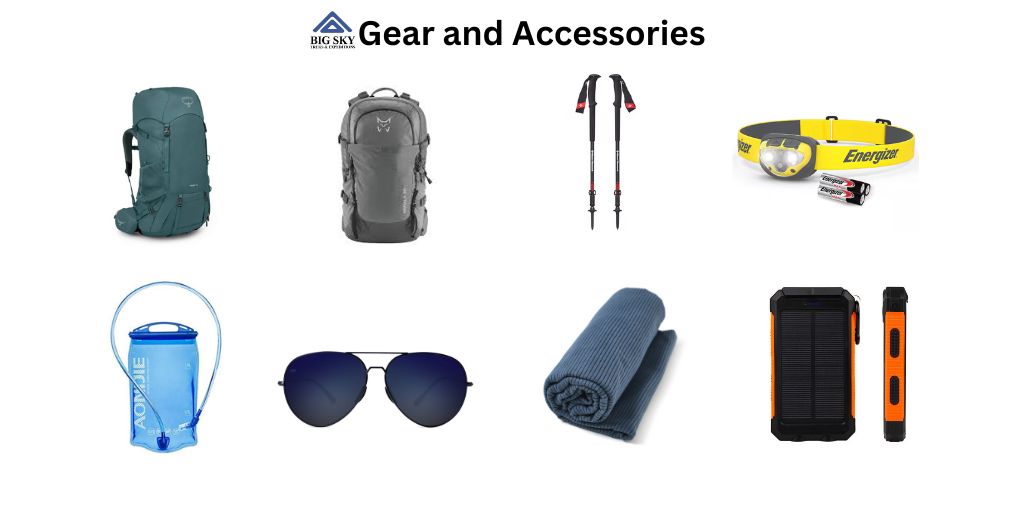
- Backpack (50–65L): With good back support and rain cover
- Daypack (20–30L): For day hikes or carry-on use
- Trekking Poles: Help with balance and reduce knee strain
- Headlamp with Extra Batteries: For early starts or late arrivals
- Water Bottles or Hydration Bladder (2–3L): For adequate hydration
- Sunglasses (UV protected): Shields eyes from intense UV rays
- Quick-dry Towel: Lightweight and compact for hygiene
- Power Bank or Solar Charger: Keeps devices powered in remote areas
These make up the core of your trekking gear for Nepal, especially for longer treks with fewer amenities.
Toiletries and Health Kit
Don’t forget the basics:

- Toothbrush, Toothpaste, and Soap (biodegradable): For personal hygiene in basic teahouse facilities.
- Sunscreen (SPF 50+), Lip Balm with SPF: Protects skin and lips from intense UV rays at high altitudes
- Hand Sanitizer and Wet Wipes: For quick hygiene in areas with limited water access
- Toilet Paper and Ziplock Bags for Trash: For sanitation and responsible waste management on trails
- Small First Aid Kit: With Band-Aids, blister pads, Diamox, painkillers, and personal medications for emergencies and altitude sickness
Health essentials should always be on your packing list for trekking in Nepal to avoid preventable problems.
Electronics and Documents
Although technology is minimal in rural Nepal, the right gadgets are helpful.

- Phone with Offline Maps or GPS: For navigation in areas with limited network coverage
- Camera (optional): For capturing scenic views and memories on the trek
- Travel Adapter (Type C, D, or M for Nepal): For charging devices in teahouses with varying socket types
- Photocopies of Passport and Permits: For backup in case of loss or checkpoint requirements
- Cash (Nepalese Rupees): Especially for remote areas without ATMs for teahouse payments and emergencies
Keeping your documents dry and secure is one of the unspoken yet vital parts of any hiking packing list Nepal.
Snacks and Personal Comfort
While food is available in teahouses, high-energy snacks come in handy during long walks.
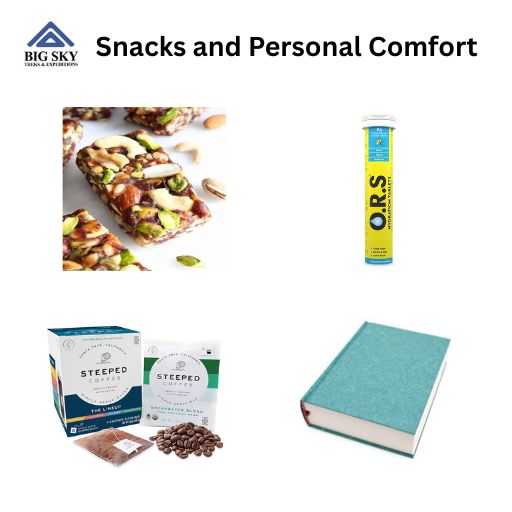
- Energy Bars, Dry Fruits, and Nuts: For quick, high-energy snacks on the trail
- Electrolyte Tablets or Oral Rehydration Salts: To maintain hydration and energy at high altitudes
- Instant Coffee or Tea Bags (optional): For a comforting hot drink in teahouses
- Book or Journal for Evenings: For entertainment or recording experiences during downtime
Adding personal comfort items can make a big difference in your overall trekking experience. These small additions complete your Nepal trekking essentials with a personal touch.
Seasonal Adjustments
Depending on the time of year, your packing list for trekking in Nepal may need slight changes:
- Spring (Mar–May): Moderate temperatures; light down jacket suffices
- Monsoon (Jun–Aug): Add a rain poncho, waterproof bags, and insect repellent
- Autumn (Sep–Nov): Peak season; layer up, especially for higher altitudes
- Winter (Dec–Feb): Pack for extreme cold—extra layers and a thicker sleeping bag
Adapt your hiking packing list Nepal accordingly.
What You Don’t Need
Avoid overpacking. Many trekkers regret bringing:
- Jeans or heavy cotton clothing
- Extra pairs of shoes
- Expensive gadgets (unless necessary)
- Too many toiletries
A minimal yet efficient packing list for trekking in Nepal is always better than an overstuffed backpack.
Where to Buy or Rent Trekking Gear in Nepal
Kathmandu and Pokhara have plenty of gear shops where you can buy or rent everything from sleeping bags to down jackets. If you’re on a tight budget or want to travel light, renting is a smart option.
This option is ideal if you’re unsure what to pack for trekking in Nepal or don’t want to carry bulky gear from home.
Final Tips
- Always test your gear before the trek.
- Pack items in dry bags or plastic liners for water protection.
- Respect local customs—avoid overly revealing clothes.
- Double-check the permits needed for your route.
Remember, the best packing list for trekking in Nepal is one that’s customized to your needs, comfort level, and the specific trail you plan to explore.
Faqs
What clothing should I pack for trekking in Nepal?
Pack layers for varying weather: moisture-wicking base layers, insulating fleece or down jackets, waterproof/windproof outer layers, trekking pants, and thermal underwear for high altitudes. Include sturdy trekking boots, warm socks, a hat, gloves, and a scarf or buff. For example, in the Everest Base Camp trek, temperatures can range from 20°C (68°F) in lower regions to -15°C (5°F) at night in higher altitudes.
What essential gear do I need for a safe trek?
Key items include a good-quality backpack (30-50L), trekking poles, a sleeping bag (rated for -10°C to -20°C for high-altitude treks), a headlamp with extra batteries, a first-aid kit, and a water purification system (tablets or a filter). A map, compass, or GPS device is crucial for navigation, especially in remote areas like the Annapurna Circuit.
How do I prepare for altitude and weather changes?
Pack altitude sickness medication (like Diamox, after consulting a doctor), sunscreen (SPF 50+), lip balm with SPF, and sunglasses for UV protection. A lightweight rain poncho and backpack rain cover are essential for unpredictable monsoon rains (June-August). For winter treks (December-February), include extra warm layers and a four-season sleeping bag.
What personal items and documents are necessary?
Carry a valid passport, trekking permits (e.g., TIMS card, national park permits), travel insurance covering high-altitude trekking, and some cash (Nepalese rupees) for teahouses or emergencies. A small quick-dry towel, toiletries, and biodegradable soap are useful for personal hygiene in basic teahouse facilities.
How much food and water should I carry?
Bring high-energy snacks like nuts, dried fruits, and energy bars, as teahouses provide meals but options may be limited at higher altitudes. Carry a reusable water bottle (1-2L capacity) and purification tablets or a filter, as safe drinking water is critical. Boiled water is available at teahouses but can be costly (e.g., $2-5 per liter at higher elevations).
Conclusion
From high-altitude adventures in the Everest region to peaceful forest walks in Langtang or Helambu, Nepal offers a variety of trekking experiences. The right preparation begins with a thoughtful, well-balanced packing list for trekking in Nepal.
Use this guide to ensure you carry the right Nepal trekking essentials, avoid common packing mistakes, and head into the Himalayas with confidence. A good trekking gear for Nepal checklist is the foundation of a successful and enjoyable trekking experience.
Whether you’re a seasoned hiker or a first-timer wondering what to pack for trekking in Nepal, this checklist will get you trail-ready.
Contact Big Sky Treks to Customize your packing list
If you’re unsure what to pack for your Himalayan adventure, don’t hesitate to contact Big Sky Treks for expert advice on your trekking preparation. With years of experience guiding travelers through Nepal’s diverse terrain and climates, the team at Big Sky Treks can provide you with a personalized packing list for trekking in Nepal based on your destination, season, and duration. Whether you need help choosing the right gear or want recommendations on what to rent or buy locally, Big Sky Treks is here to ensure you’re fully equipped for a safe, comfortable, and unforgettable trekking experience.

